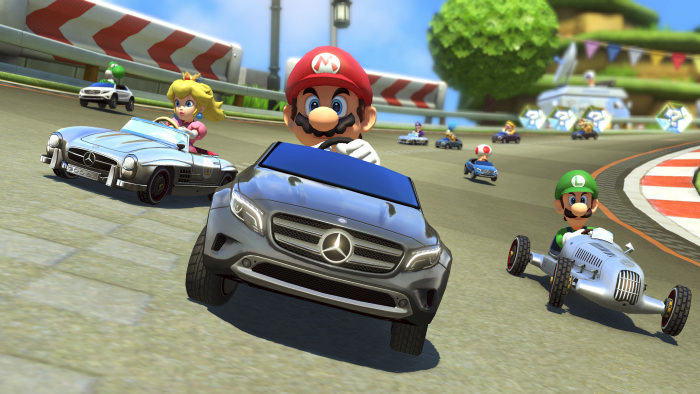23.05.2024
Today's society is witnessing an increasingly intrusive advertising, which sometimes forces the public to make an economic effort to get rid of ads. Among the traditional advertising formats, new ways of advertising are emerging: Advergaming and Gaming Marketing, which have become popular in recent years due to their differences compared to other advertising strategies. In this article, we tell you the reason for their boom and some of the real cases in which their implementation has been a success.
What is Advergaming?
The combination of Advertising (advertising) and gaming (video games) was born as a new strategy to make the usual advertising in a different way. In itself, it is a technique based on the creation of video games with the purpose of advertising a specific product, brand or service. In this way, we achieve an advertising that is introduced in a subtle way and is attractive to fans of video games. Unlike common techniques, advergaming offers an entertaining experience to the user while he/she is exposed to the messages of the advertising campaign.
Although advergaming is defined as a unique advertising strategy, it also has a great evolution. Companies are looking for different ways to introduce the desired advertising in video games and are betting on more disruptive technologies such as Virtual Reality, Augmented Reality and Metaverse, so that the gaming experience and the advertising they advertise are more immersive. This translates into a strategy that is much more appealing to the public due to the immersive environment in which it is developed.
What is Gaming Marketing?
Although the term Gaming Marketing can be confused with Advergaming, there are some differences that you should know. Contrary to advergaming, video game marketing is composed of different strategies that use video games as a platform to promote products, brands or services, but without creating a specific video game for the campaign. Gaming Marketing leverages the popularity of an existing video game to reach a wider audience. In this way, advertising content is integrated into the user's game in order to get the audience's attention.
Why Choose Gaming Marketing and Advergaming?
As we have already pointed out, these new strategies differ from the advertising we are used to, which makes them interesting options to carry out. Below, we reveal the keys to success of these techniques:
Non-intrusive
One of the major attractions of advergaming and gaming marketing is their ability to provide an entertaining experience for users where advertising has a place. Compared to usual advertising, which can often be intrusive and annoying, these techniques seek to integrate advertising as seamlessly and subtly as possible within an entertainment experience.
Advergaming and video game marketing allows brands to insert their advertising messages in a way that does not disrupt the user experience. In this way, instead of being an advertisement that the player wants to skip or avoid, advertising becomes an integral part of the game. This strategy works by introducing branded products in the form of characters, scenarios or other game elements.
Personalization
Both gaming marketing and advergaming have become very flexible tools due to their high degree of customization. They are designed to achieve the greatest effectiveness and relevance according to the needs of each company or brand. Likewise, each video game can be specifically programmed to reflect the identity and image of a brand and highlight its product catalog.
With advergaming it is possible to create environments, characters and narratives that perfectly match the brand's values and aesthetics. On the other hand, gaming marketing can use video games that have a great support by themselves, and introduce a product or brand in the game's plot. Therefore, in addition to being a visually appealing advertisement, it is also an advertisement that makes sense within the context of the video game.
Virality
Nowadays, video games are usually designed for both individual and collective experience. The vast majority of the most popular video games in recent years have one feature in common: sharing. This allows sharing personal achievements, inviting other players, among other functions.
This feature guarantees greater traffic in any videogame, and, consequently, a greater possibility of viralization. Thus, if we incorporate video game marketing or advergaming in a video game with these features, we obtain a content capable of being shared quickly among a large number of people, considerably increasing its visibility and reach.
Interaction
Unlike traditional advertising media, where consumers are passive spectators, video games require active participation. Players must interact with the video game to make decisions, solve problems and, in short, advance. This participation makes players more attentive and receptive to the advertising messages introduced in the game.
This advantage is intensified if we implement immersive technologies, such as Extended Reality or Metaverse, since they provide greater immersion, which therefore generates more interaction.
Optimal Segmentation
Related to high personalization is optimal segmentation. Gaming marketing and advergaming facilitate a more precise segmentation, which is fundamental to maximize the effectiveness of the advertising campaign and ensure that the messages have the expected reach.
Information about age, gender or geographic location that is often collected in video games can be leveraged by advergaming and gaming marketing, resulting in a defined target audience for a specific advertising campaign.

Differences between Advergaming and Gaming Marketing and Conventional Advertising
As you have already seen, advergaming and gaming marketing is different from other forms of advertising, in the sense that it is a less intrusive strategy and has a great potential to reach the maximum expected audience.
The key to advergaming and gaming marketing is bidirectionality. In conventional advertising, the media sends the message to the user but there is no response, it is a one-way relationship. In the case of these two techniques, the user receives the information but interacts directly with the content, so the engagement and the possibility of retaining and remembering the advertising message is greater.
In addition, thanks to the user's interaction with the advertising content, the brand can obtain greater recognition and improve both its image and the public's perception of it. In contrast, conventional advertising is often seen as annoying, as the ads interrupt the user's activity abruptly. This can lead to a negative perception of the brand.
Four Examples of Advergaming and Video Game Marketing
In this section we demonstrate some case studies to help you visualize what these techniques are capable of:
McDonald's Land in Roblox
The hamburger chain that dominates the fast food market bet on the metaverse in one of its advertising campaigns. Thus, in the well-known Roblox platform there was a virtual world where the game was related to McDonalds's, so that the player could interact with elements such as ketchup or the mythical McFlurry. Thanks to the integration of Gaming Marketing in the metaverse McDonald's achieved a unique way to attract the public, reflecting itself as an innovative and fun brand capable of adapting to the technological innovations that define our society.
Fortnite is one of the most famous video games of the last decade. With more than 240 million monthly players, Fortnite became the ideal choice for FNAC's advertising campaign. Through a virtual world based on the retail company, players could be introduced to the themes related to the products marketed by FNAC, so that brand recall and impact increased considerably thanks to the Video Game Marketing strategy.
More about this project
Minion Rush
The release of Gru 2: My Favorite Villain was accompanied by a video game to promote the long-awaited movie. In the game, called Minion Rush, the main characters were the Minions, who went on a journey full of rewards and challenges. The game had 6 million downloads and was so well received that the advergaming strategy was used to promote the release of the Minions movie.
Mario Kart 8 X Mercedes Benz
One of the best-selling games for the Wii U turned out to be the perfect opportunity for video game marketing, and Mercedes Benz took advantage of it. This time, the protagonists of Mario Kart 8 drove the most iconic models of the German company. This integration of the product in the videogame had very good responses from consumers and the collaboration was consolidated as one of the most outstanding examples of Gaming Marketing.
Advergaming and Gaming Marketing: What Future Awaits Them?
As you have seen in this article, both advergaming and video game marketing are a powerful tool that can revolutionize the way advertising is done. Despite their long history, they have a promising future due to the constant evolution of video games and immersive technologies. The integration of the most cutting-edge technologies can intensify the advantages that these techniques have in themselves and make advertising campaigns capture the attention of the target audience in an effective way.
However, advergaming and gaming marketing also face challenges, such as managing privacy and ethical issues related to the collection of demographic and geographic data such as age, gender or location. Nevertheless, these strategies will be reinvented over the coming years to exploit their potential and correct flaws.
If you are interested in introducing your company in Advergaming or Gaming Marketing but you don't know how to do it or where to start, let us help you.

















 RETURN
RETURN







